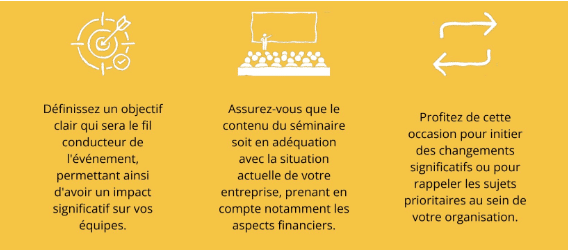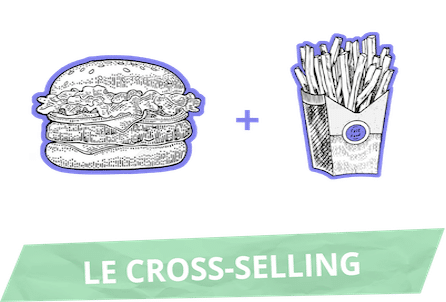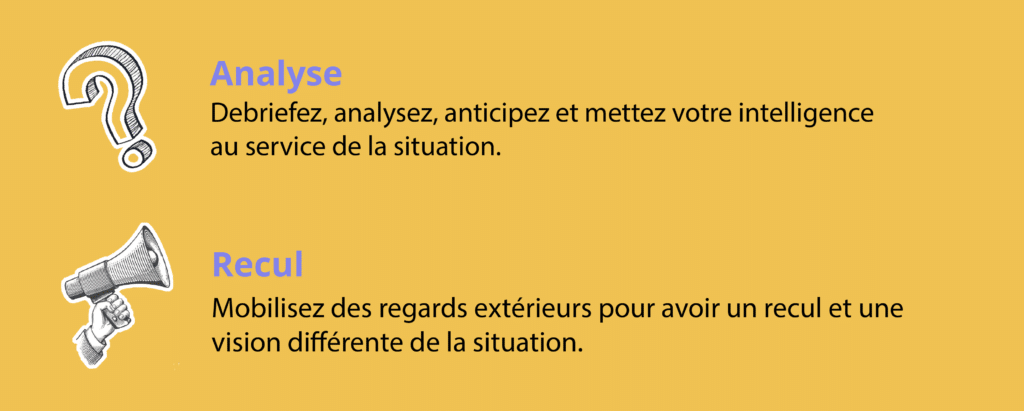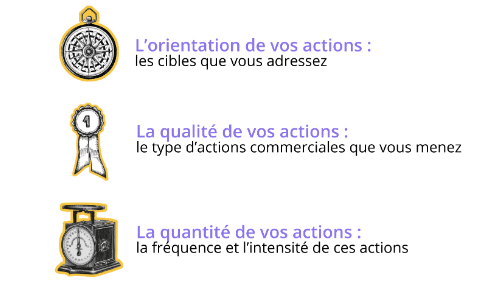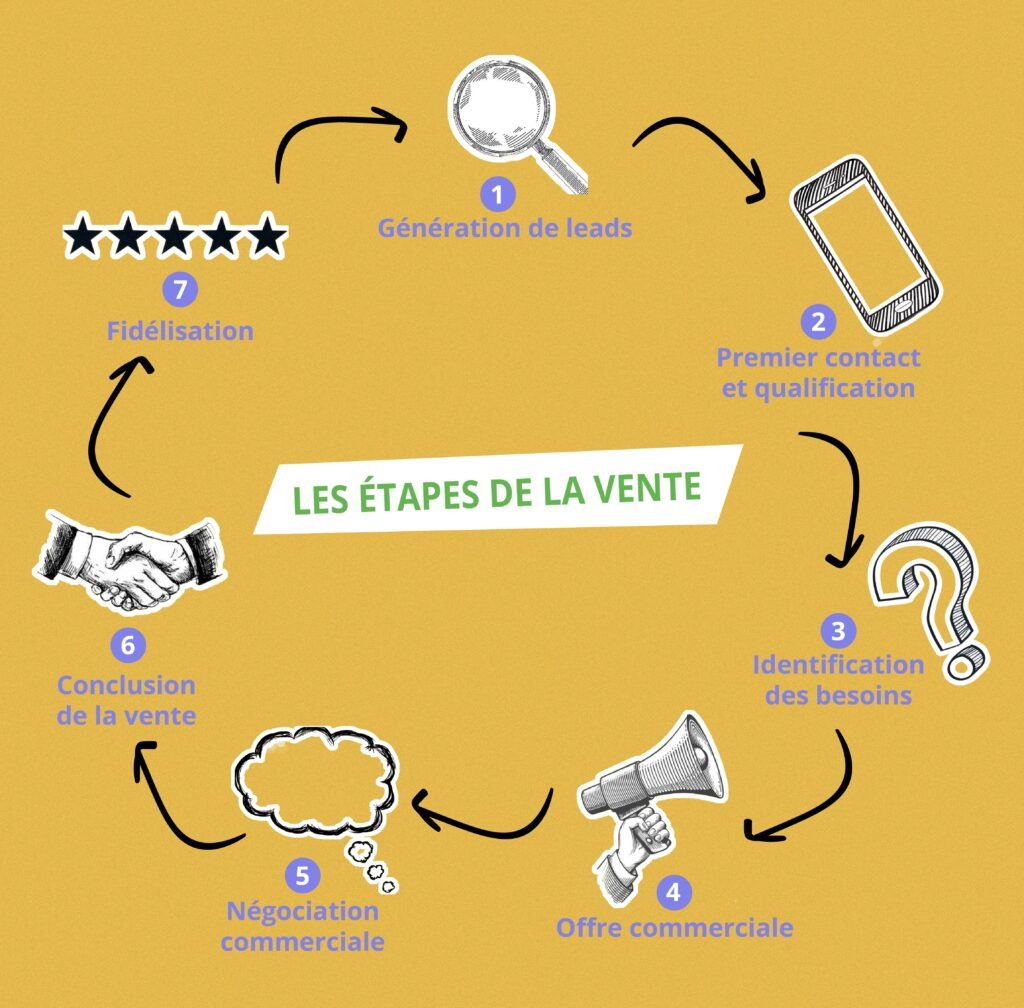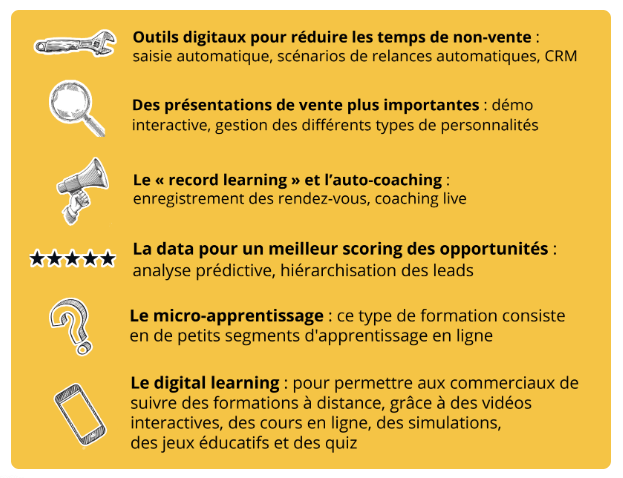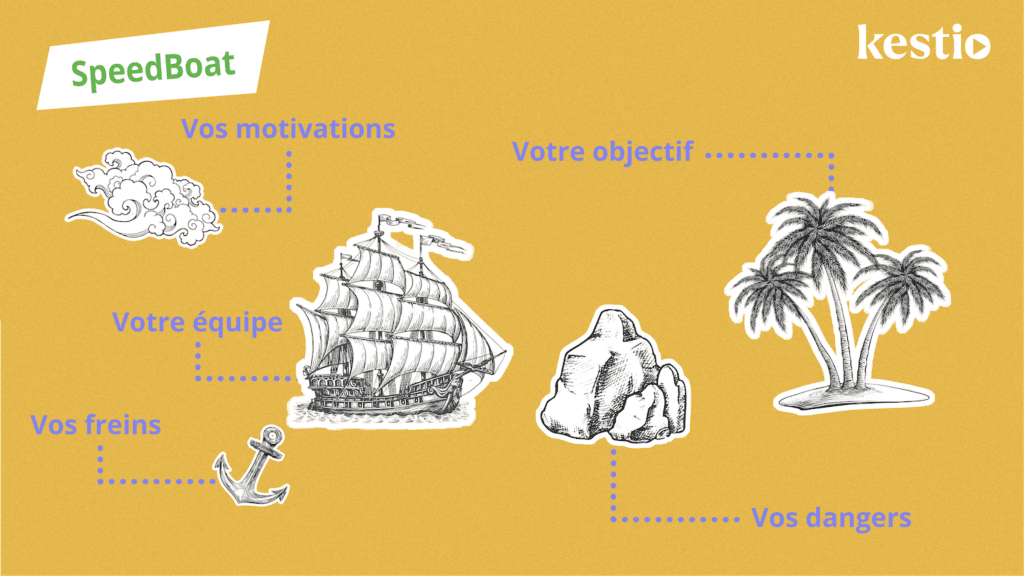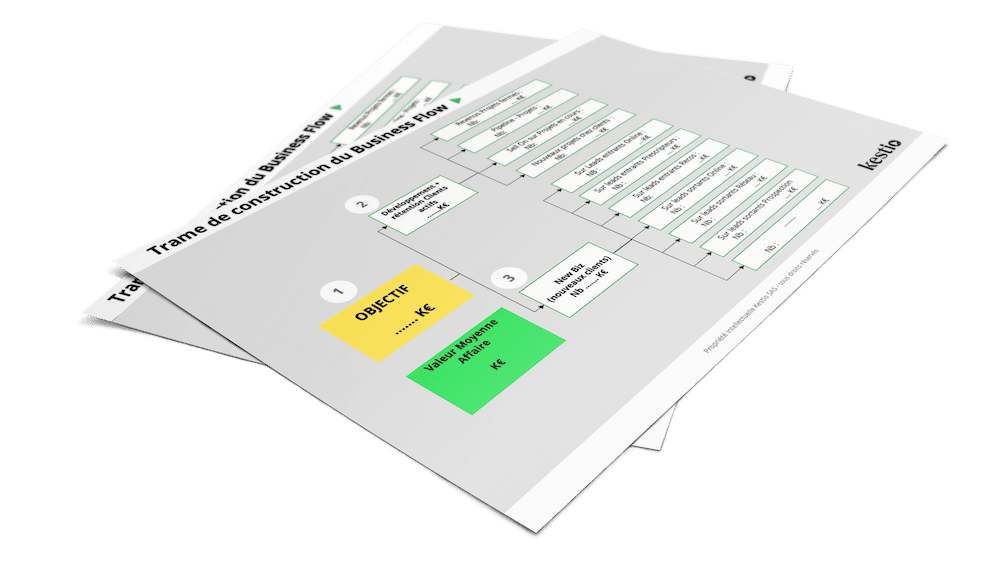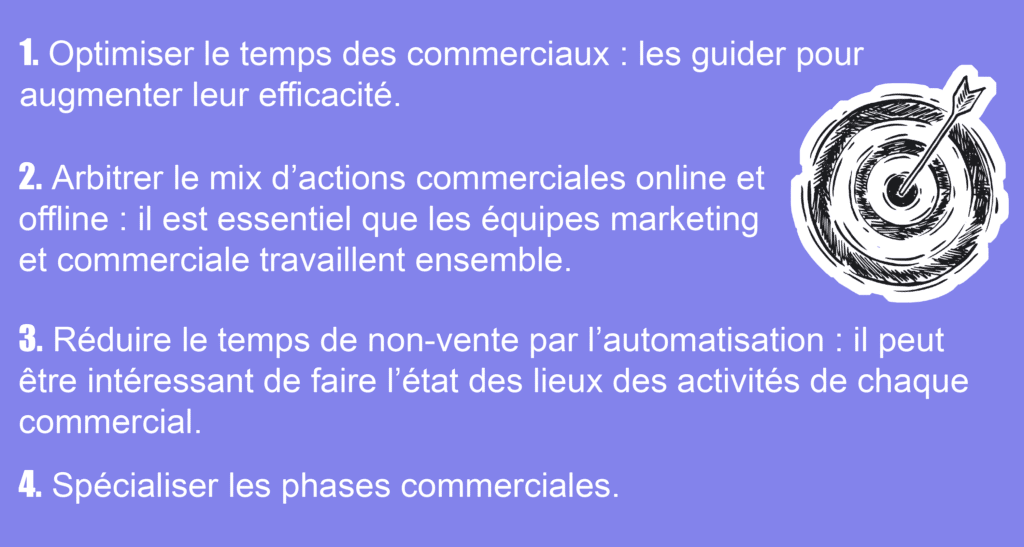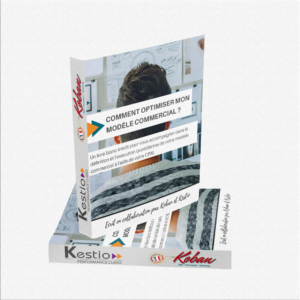Ask a manager if his company's sales strategy is clear to his staff, and he'll say "yes" without hesitation.
Now, ask one of his sales reps if he knows why he has to get his 5 appointments a week, and the answer will be far less clear!
This difference in perception reflects a challenge you are surely facing: getting your teams to adhere to your sales strategy.
Because achieving your objectives depends on your employees implementing your corporate strategy.
So how do you get your teams to understand the benefits of this strategy and get them to apply it in the field?
*Source: Forbes survey
KEY No. 1 - Translate your strategy into action
One of the most common mistakes made when discussing sales strategy with salespeople is to focus solely on the results achieved.
Why do you do this? Because you can no longer act on results! They represent only the visible part of sales activity.
We can, however, act on the various sales actions that lead to these results.
The implementation of a Sales Action Plan will enable you to define 3 essential levers for your sales activity, reflecting your strategy:
By focusing on the sales actions of your teams, you deliver two key elements to your sales force: a sense of your strategy and the concrete means to achieve your objectives.
Because it's one thing to ask your sales people to sell 5,000 copies of your flagship product... It's quite another for your teams to achieve this objective.
By detailing the stages of your sales process and associating concrete sales activities with them, you can help your staff identify their strengths and areas for improvement.
To help your teams optimize their sales efforts, we're sharing our "Go/No go" scoring chart with you.
This tool, which you can add to on a daily basis, helps you to select the opportunities with the greatest potential, thanks to different criteria based on the main stages of a sales process!
KEY No. 2 - Make the most of your resources
Today's customer expectations have changed dramatically when it comes to sales. Influenced by changes in technology and buying habits, customers are increasingly demanding, with expectations that include :
- A personalized experience: salespeople must identify unique needs and add value to them.
- Real-time communication : customers want to be able to communicate with sales staff quickly and efficiently.
- Transparency : salespeople must be transparent about the products and services they sell, including prices and conditions.
- In-depth knowledge: salespeople need to have in-depth knowledge of the products and services they sell, including the pros and cons.
With this in mind, it ' s important for salespeople to adapt to these new expectations to maintain their relevance and competitiveness in the marketplace. Make the most of the resources you make available to your sales force, so that they can apply your sales strategy in the field.
Make a list of these resources with two objectives in mind: on the one hand, to make your sales reps aware of them so that they take them on board, and on the other, to boost their motivation by showing them that the company is investing to give them the means to achieve the results they're aiming for.
Some examples of resources :
At Kestio, our digital learning team offers interactive and engaging training modules to meet the personalized expectations of our customers. If you're still not sure, discover a video presenting our approach.
And if you're interested, you can talk to one of our digital learning experts!
Talk to an expert in
digital learning
KEY No. 3 - Work on your mindset
The mindset of sales teams plays a key role in achieving their objectives. A positive attitude can lead to successful negotiations and satisfied customers.
The manager's role will be to give a positive impetus to his team, by celebrating successes and offering positive perspectives for the future. This can be achieved by asking the team for their victories of the week, sharing new ideas that have worked, empathizing with team members and seeking out the unspoken.
Relate the sales strategy and objectives for the coming months to the victories achieved over the past year, by asking yourself the following questions:
- What lessons did you learn?
- How are they used in the current strategy?
- How can you duplicate them or draw inspiration from them to build a scalable model based on variables observed on a certain scale?
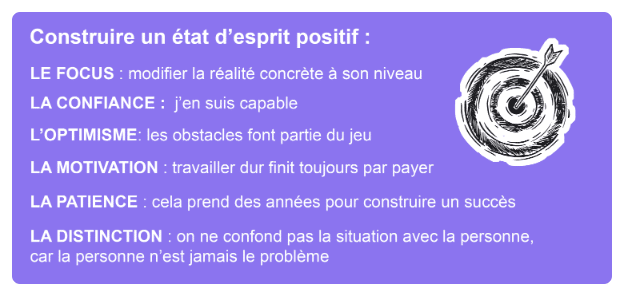
Webinar - What motivational levers to adopt for each
each employee?
KEY No. 4: Expert advice
Faced with this situation, some employers end up resigning themselves and abandoning their recruitment project, or choosing profiles that don't fully meet their expectations. However, there are alternatives to recruiting a new sales representative, and they may even prove more profitable for your company. Here's how.
1. Improve the sales efficiency of your current team
Did you know that the average conversion rate for salespeople in the BtoB sector is around 10%? In other words, 90% of a salesperson's working time is spent on business destined to be lost!
The good news is that it's entirely possible tosignificantly improve this result, as we prove every day in the field.
Aiming for an average success rate of 30% on sales proposals is quite realistic, even in BtoB, and a desirable minimum.
If your sales force is not at this level today, there's no need to recruit new ones to stimulate your growth: you already have plenty of room for improvement with the same human resources (and therefore salary costs)!
We generally manage to significantly improve our customers' success rates by supporting their sales teams in their progress, particularly in 2 areas: the quality of targeting and the quality of the sales actions carried out with their prospects.
The advantage of such an approach is that it not onlyincreases your sales, but also, and above all,optimizes your profitability, which would not necessarily have been possible with new recruitment.
2. Opt for a more segmented sales organization
Here's what we see most often with our customers, in terms of sales organization: the sales person multitasks and takes charge of the entire sales chain, from lead generation to closing, including making appointments, discovering needs, drawing up the sales proposal and follow-up.
This organization has several disadvantages:
- On the one hand, multi-skilling can lead to a certain amount of "scattering" between the various tasks, and therefore a loss of efficiency.
- On the other hand, it's rare to find sales profiles who master all these tasks well, so this complicates the search for the ideal candidate.
- Finally, not all these tasks offer the same level of interest in the eyes of a "seasoned" salesperson, which can encourage talent volatility.
Formalizing and segmenting the sales process by breaking it down into different phases, then distributing these phases among several people according to their skills and aptitudes, often proves much more effective.
This generally results in considerable productivity gains, with each person concentrating on a single type of task, for which they will gradually gain in experience, speed and efficiency.
We generally recommend dividing the sales process into at least four phases (e.g. identifying prospects, making appointments, conducting interviews and drawing up the sales proposal), then assigning each of these phases to a team member, with no more than two phases per person.
In some cases, this type of organization can "spare" you the need for additional recruitment, thanks to the productivity gains achieved. At the very least, it simplifies your recruitment process, by limiting the range of skills required for each position.
Discover the KESTIO webinars, where we discuss
all topics related to sales performance with our experts:
Fabien Comtet, CEO
Dominique Seguin, General Manager
Nicolas Boissard, Marketing Director
3. Use substitute or replacement sales forces
Another alternative to recruiting multi-skilled salaried sales staff is to use an outsourced sales force: a company specialized in telephone prospecting, for example, or a freelance business developer.
The use of external sales forces has several advantages: it costs less than permanent recruitment, can be terminated more easily, and is generally accompanied by a commitment to results.
It also offers greater flexibility: external sales representatives can be employed on a permanent or ad hoc basis, on a part-time basis, as back-up during busy periods, or dedicated to a particular target...
Compared with a permanent contract, this represents financial savings and controlled risk-taking.
Another advantage of this formula is that outsourced tasks are generally the least complex (contact file generation, telephone prospecting, etc.), allowing the permanent sales team to concentrate on "higher added value" tasks.
Be careful, however: to be effective, the use of an outsourced sales force must :
- Focus on a clearly defined perimeter and follow an established, internally controlled process
- Regular monitoring of key performance indicators via CRM or ad hoc dashboards
- Use sales tools designed and validated in-house: salesbook, standard emails, references and sales pitch by target, etc.).
It requires a well-documented sales cycle, but also a certain agility to ensure a smooth handover between external and internal sales teams.
For one of our customers, this strategy enabled us to optimize the management of a highly seasonal business, by reducing the number of permanent hires initially envisaged from 5 to 2, to achieve a higher target!
4. Retain your existing sales force!
The three alternative solutions we have just presented are designed to meet the needs of business development, which motivates a large proportion of sales recruitment projects. However, another part of these recruitment projects is linked to the sometimes high turnover observed in these positions.
With companies' demand for experienced sales profiles far outstripping supply, market conditions are conducive to talent volatility: 38% of salespeople have received job offers without having actively sought them out, according to a Stepstone study on sales employment.3
To build loyalty among your sales staff in general, and the best among them in particular, it's essential to promote the sales function as such.
Remuneration is obviously an important lever, but here too, competition is fierce: sales salaries are 57% higher than the average salary in France, according to a study by Uptoo4...
If you want to stand out from the crowd, make sure that your sales staff have an interesting and stimulating day-to-day working environment: a high-quality working environment and conditions, high-performance tools, a clear and relevant sales action plan, a management style that encourages personal progress, opportunities for internal development, and recognition for initiative and success... These are all elements that count in the eyes of your staff and encourage their long-term commitment!
By working on some or all of these 4 areas, you can considerably reduce the number of sales recruits your company needs, while effectively meeting your growth and sales development objectives.
To stay competitive and maximize your chances of converting your leads into future customers, it is important to optimize the performance of your sales assets. Find out how by watching this webinar:
1: According to ManPowerGroup's 2018 Talent Shortage Survey: http: //www.manpowergroup.fr/penurie-talents-recrutement-2018/
2 : Source ParisJob : https://www.parisjob.com/actualites/commercial-chiffres-paris.htmls://www.parisjob.com/actualites/commercial-chiffres-paris.html
3: Quoted by France Info: https: //www.francetvinfo.fr/replay-radio/c-est-mon-boulot/la-grande-penurie-de-commerciaux_1766077.html


